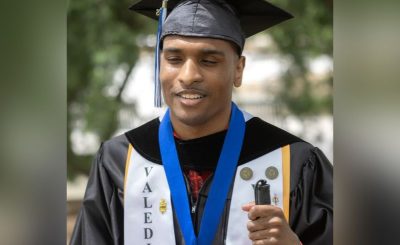By Angelina Sitara Iadanza

Do you wonder what major you want to focus on for your college career? Well, at Queensborough Community College, an education major is very popular major . According to Data USA on the statistics of students majoring in education at Queensborough, 24.2% majored in education with 450 degrees awarded in 2022. Since there are many of requirements that need to be completed for this specific major, which is a part of the liberal arts academy, including observational hours, one might ask, why are so many students drawn to education?
Queensborough’s Education Major
There are a range of professions within teaching that students might enter, whether special education, elementary school, middle school, high school, or it’s being a teacher assistant or going into certain core subjects (mathematics, English, science, social studies, and so on). Most people majoring in education end up working in elementary schools, according to Data USA Reports. Queensborough education major Colin McGarvey, for one, would like to be a first or second grade teacher, and Ariana Giaimo, another QCC education major, hopes to become a kindergarten teacher.
A variety of classes that need to be taken at Queensborough for students majoring in Education. Ideally, mathematics and English courses were required to be taken along with two education courses, a music course, a few history courses, two science courses, a speech communication course, and some optional courses that relate to a person’s future career. Besides courses required for all students such as College Algebra and English Composition, typically, students also take a cycle of U.S. history courses. “Music for Teachers of Children” is also an excellent course for students who want to become music teachers and create a safe, welcoming environment for children to enjoy learning music.
It is also crucial to complete observational hours in both EDUC 101 (Contemporary Education: Principles and Practices) and EDUC 230 (Childhood Learning and Development in Cultural Context) to understand how teachers interact with students in a classroom setting. The main reason to complete observational hours is to take notes on how teachers interact with their students in the classroom. In addition, observational hours help others gain experience on what it’s like to work with younger students in public schools in the future. Finally, observational hours can best help others better a student’s education in the future by understanding what they need to be taught in schools. Teachers are obligated to stick to their lesson plans to be conducted in the classroom environment, so their students can be able to effectively learn these lessons; they can remember what they learned and apply them to their daily lives. Observational hours should last for about 10-15 hours depending on the policy. Once the observational hours are completed, an observation paper is then completed based on the notes taken from the times observational hours were done.
Why Teach?
There are a variety of reasons why Queensborough students want to be teachers. For example, Ariana Giaimo says, “I have always loved children and helping people, so it feels like it’s the best of both worlds to help in the classroom environment. Similarly, younger children can be very easy to work with no matter their difficulties, whether it’s transitioning from one activity to another or expressing themselves without throwing a tantrum.”
Priscila Cancel, also an education major, would like to would like to become a paraprofessional to aid students with disabilities in adapting to a new environment and help them with their struggles. For example, if a student struggles with reading comprehension, a paraprofessional can help them understand what is going on in the story and remind them to stay focused on the task if the child ends up daydreaming. According to an article about paraprofessionals from the National Council on Teacher Quality in July 2023, there was a 23% increase in staff members as paraprofessionals from 2021-22 school year.
The Challenges that Teachers Face
The main challenge of becoming a teacher would be to see where each child is at, based on the curriculum taught, because everyone learns differently, according to Giaimo.
“Many teachers can make children feel excited to learn new things in the classroom and make sure they have someone to look up to for motivation. Teachers can encourage their students to always do their best in the classroom no matter what challenges they face without yelling at them. Being a teacher ideally should not be a challenge, unless it has to do with money issues.
According to statistics about Teacher Burnout, 48% of current teachers quit their jobs due to compensation. In addition, being an elementary teacher might be time-consuming, so they struggle to balance time with students and time with themselves depending on how they schedule their lesson plans for the schedule. If teachers can’t afford to teach in the classroom, it’s not necessarily because of the disrespect that they receive, but it’s because of how much it costs to become a teacher. Additionally, when teachers are stressed out, they tend to yell at their students which limits the students’ confidence in learning new lessons in a classroom environment.
Having to do hands-on work with students with disabilities as a paraprofessional can be extremely challenging because not all students with special needs know how to do hands-on projects. Most students with disabilities in particular learn better through guidance and the support they need to best fit their academic goals. With that being said, every student has different styles of learning, especially in the classroom.
According to Garvey, trying to maintain their temper when dealing with younger children can be difficult for teachers, especially when they are going through stress. In general, teachers need to understand that not all younger students know how to properly behave, so they must be taught basic rules such as “walking feet” without shouting at them. In addition, younger students tend to take time to understand what’s good behavior and what’s unacceptable behavior. Problem-solving skills can be difficult sometimes, but teachers in general can try taking a step back instead of reacting to certain situations immediately. Finally, younger children could be very energetic to be in the classroom because they look forward to learning new lessons from the teacher.
Bridging the Gender Divide
In addition to these, the profession faces a major challenge: the lack of men pursuing teaching. According to the data from Teaching Degree Search, 86% of students majoring in education were women. There are more female students majoring in education than male students which is very surprising. This is because “not enough men would want to go into teaching”, and they feel that only women can do all the teaching. However, men can be able to teach in public schools; teaching is not just a job for women. Luckily, there is a program that can enable men to become teachers in the future. This program is known as NYC Men Teach.
NYC Men Teach partners with the Office of the Mayor, NYC Public Schools, and CUNY college programs to improve the diversity of the NYC Teaching workforce by including 1,000 male teachers of color into the teaching path. NYC Men Teach also follows the 3’s (educate, engage, and empower). In other words, this program educates the next generation of leaders, engages with classrooms and other communities that will affect cultural relevancy and empowers young people by reflecting their cultural factors and values in the classroom and all their society.
NYC Men Teach also promotes the importance of diversity in terms of why men should often be included in teaching careers and encourages individuals of diverse races and men who are people of color to participate in their program. According to the statistics from NYC Young Men’s Initiative, males of color make up 43% of NYC Public Schools’ demographics, only 8.3% of male teachers are of Black, Latino, and Asian origins.
Queensborough educations majors agreed that they particularly chose this major because they were inspired by their past teachers who made them feel a sense of belonging, fun, and self-expression in the classroom environment, and the teachers inspired them to do the same in the future. They also were able to receive support from their teachers when needing to be guided with assignments that they were having trouble with. Teachers do not want students to give up on certain challenges. Not everything in life, especially becoming a teacher, is an easy path as there will be challenges coming their way. Teachers can best benefit from their past experiences of working with students to utilize the basic needs in the classroom environment (sense of belonging, fun, mastery, independence, self-expression).



